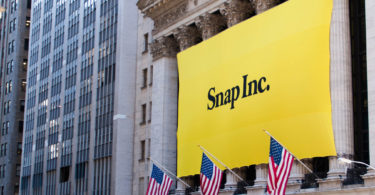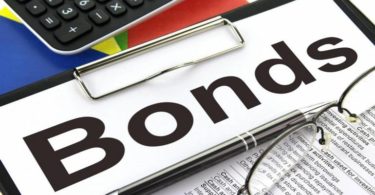If you watch the markets at all, you've probably already accepted that Tesla (NASDAQ: TSLA) is a major bellwether for the entire tech sector.
A good day on the Nasdaq, more often than not, is also a good day for Elon Musk and the world's most valuable automaker.
Lately, however, things have gotten a bit dicey over at the (now) Austin, Texas-based EV producer.
In the 24 trading sessions between September 19 and October 24, Tesla shareholders shed more than one-third of their position value as the share price plummeted from $308 to under $200 – a price unseen since 2020.
That represents a market cap reduction of $345 billion – over $16 billion of which came directly out of Elon Musk's pockets.
Toyota Motor Corporation (NYSE: TM), the world's second biggest car maker by market cap, is only worth $183 billion.
Now, as far as the reasons behind this monumental loss, you're going to have your choice of theories.
The Usual Suspects…
The MSM's talking heads will mention things like overblown valuations, Elon Musk's sale of over $6 billion worth of shares to finance his as-yet-unsettled purchase of Twitter, turmoil in the markets, Putin, and everything in between.
And the truth is all of those factors definitely have something to do with the selling pressure, but when they're viewed in context with 52-week highs ($414 in November of last year), a sober-minded investor will still be left scratching his head, wondering what on earth is going on.
The usual tricks to right the ship aren't working, either.
In the midst of all this, Musk announced that the company was developing a brand-new model, the Model 2, which purportedly slashes the cost of the existing entry-level model, the 3, by as much as half.
According to the CEO, the addition of the Model 2 to the lineup should easily propel Tesla's market cap into a previously unheard-of realm of $4 trillion.
On any normal day, talk like that is enough to put the stock into at least a minor rally as die-hard fanatics quintuple down, but this time, it hardly registered at all.
Again, an even-keeled observer would have to ask himself why this is happening. What's going on behind the scenes to make a once unsinkable ticker symbol start to remind us of WorldCom of early-2000s fame?
The Real Truth Is… Inconvenient
Of all the theories popularized in the mainstream media, the one thing they're leaving out is something that Musk and Tesla's shareholders cannot stomach on any level: The company's product is on the verge of obsolescence.
But that's exactly the reality. Tesla and its world-conquering brand are staring a very serious technical shortcoming right in the face.
It's a problem that affects the very heart of every vehicle that rolls off the Tesla production line – the very motors that give Teslas their famous power.
Now, before anybody gets excited that I'm smearing the legendary Tesla name, let me clarify that this isn't a problem that only affects Tesla.
Indeed, it affects every electric vehicle in existence today. It's just a bigger problem for Tesla because a) Tesla's lineup consists exclusively of electrically driven vehicles and b) as mentioned earlier, share value was already well into bubble territory.
The technical problem goes back to the core of electric motor design, specifically to one inefficiency that's been around since the very first motors were produced, all the way back in the 1830s: Peak torque levels can only be achieved at one set rotational speed.
Spin the motor faster or slower than that optimal speed and torque drops off.
It doesn't seem like a huge problem, but the efficiency sacrificed during moments of hard acceleration are substantial.
A 21st-Century Solution for a 200-Year-Old Problem
All of this was a non-issue when all the other electric motors in the world suffered from the same flaw, which brings me to the next logical question: What's changed?
What's changed is that, like always, a new technology emerged that disrupted the status quo.
A new invention, which allows for artificial intelligence to regulate the flow of charge to the core of the electric motor, was perfected by a small tech company headquartered in Calgary, Canada.
This innovation, when mated with an electric engine, can give a 8%-10% boost in efficiency.
It also cuts down on wear and tear, extends service life, and allows more power to be generated across a broader range of operational conditions.
Slowly but surely, this problem – and the bigger problem behind it (Tesla does not own the solution) – is helping share prices reach new lows every day.
The company that holds the rights to the breakthrough AI tech I just described is a small, focused operation that's virtually unknown outside of industry, but all of that is changing rapidly.
It Could Be in Every EV by the Year 2030
With deals already signed with multiple consumer product companies, including an electric boat and electric bike maker, this performance-enhancing tech is gradually making its way through the electric motor hierarchy.
The end goal, and the Holy Grail, is the EV industry – the very market Elon Musk and Tesla will have you believe they already own.
In the next year to year and a half, maybe sooner, the EV threshold will be crossed, and once that happens, Tesla will have three choices: a) license the technology, b) buy the company that owns it, c) or sit back and watch as the market slowly shifts away from Tesla products.
It's that simple.
For savvy investors, however, there are only two choices: a) buy the stock of the company that owns this tech today and watch the ensuing revolution that it brings, or b) sit this one out and miss perhaps the biggest investment opportunity of the decade.
To make the decision easier for my readers, I asked our production team to put together a little informational video that boils it all down.
It's quick, it's easy to understand, and at the end, you'll know everything you need to know about the technology, the stock, and the company behind it all.
You can have access immediately if you're interested. No registrations necessary.
Or you can wait until the MSM finally picks up on this and sends the stock through the roof.








